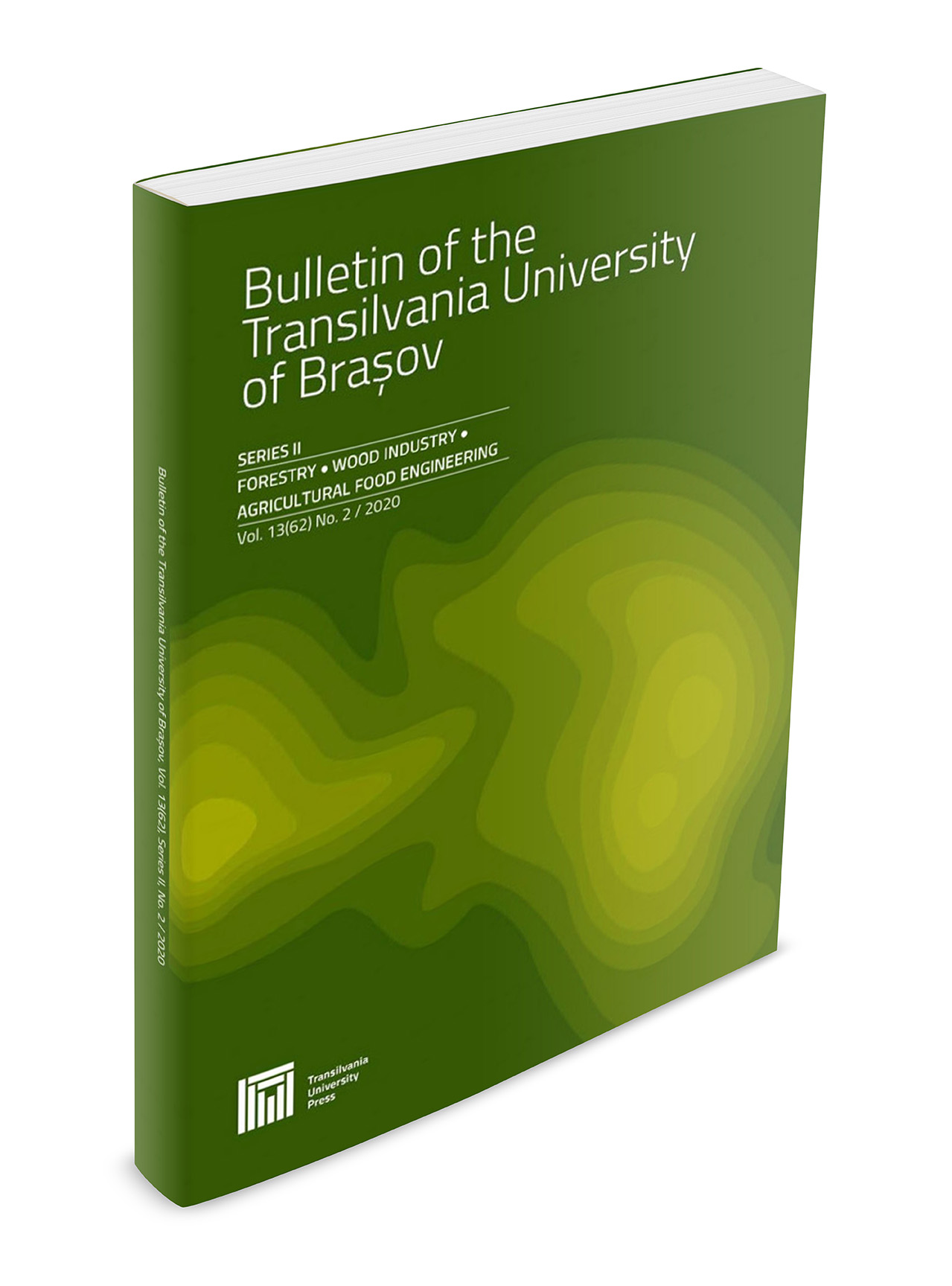Changing the Antioxidant Activity of Cherry Fruits during Storage by Means of Pre-Treatment with Polysaccharide Compositions
DOI:
https://doi.org/10.31926/but.fwiafe.2020.13.62.2.14Keywords:
anthocyanins, cherry fruits, storage, chitosan, salicylic acidAbstract
The article shows the effect of pre-treatment with chitosan and salicylic acid on the anthocyanin content of cherry fruits after storage. The research was conducted between 2016−2019 within the premises of the Station of Horticulture named after M.F. Sidorenko of the Institute of Horticulture of NAAS of cherry fruit varieties Alpha and Pamiat Artemenko. For the study, 15 trees of each variety were sprayed with a solution of 100 mg /l of salicylic acid; 1% chitosan with salicylic acid (100 mg /l) the day before harvest. The fruits were harvested at the consumption stage of ripeness from four different places of the crown from each tree of a certain variety and type of treatment, placed in boxes №5 weighing 5 kg for storage at a temperature of 1±0.5 °C and relative humidity of 95±1%. Non-treated cherry fruits were taken for control. The experiment was repeated three times. It was found, that the cherry fruits from the Alpha and Pamiat Artemenko varieties are dominated by anthocyanins: cyanidin-3-glucorutinoside in the amount of 204.9 and 103.5 mg/100 g and cyanidin-3-rutinoside 72 and 36.6 mg/100 g. In the period of storage, the content of cyanidin-3-glucorutinoside and cyanidin-3-rutinoside decreased by 1.6−1.7 and 1.2 times. The treatment of cherry fruits with a solution of chitosan reduced the losses of cyanidin-3-glucorutinoside by 1.56 −1.7 times and the cyanidin-3-rutinoside content to 8.7−7.6%. The content of cyanidin-3-glucorutinoside in cherries treated with a solution of chitosan with salicylic acid was the most preserved, as the losses decreased 1.5–1.25 times. The content of cyanidin-3-rutinoside decreased to 0.5-0.83%. A strong correlation (r = 0.86) was established between antioxidant activity and the light transmission coefficient and a regression equation was derived.



